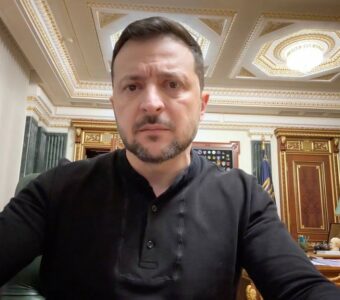Rebuilding Ukraine will cost $250 bln – European Bank for Reconstruction and Development

The five-year recovery period of Ukraine will require additional investments of about 50 billion US dollars per year.
The EBRD reports this.
"The latest European Bank for Reconstruction and Development (EBRD) Regional Economic Prospects report presents a scenario that demonstrates, based on the lessons of history, that the five-year recovery period will require an additional investment of around $50 billion per year through foreign capital inflows, including a private one," the message reads.
It is noted that most post-war economies neither experience a sustained period of calm during the 25 years following the war nor recovered to pre-war levels of per capita income, even in the long run. But according to the report, 29 percent of economies reach pre-war GDP per capita levels within five years. This study combines the commonalities of successful reconstruction that Ukraine might have followed and extrapolates pre-war trends based on the performance of economies similar to those during the war.
For Ukraine to recover within five years, its economy would have to grow by 14 percent per year throughout this period. At constant prices, this would raise the average GDP to $225 billion from about $150 billion in 2022.
A key feature common to periods of sustained extremely high economic growth is a high investment-to-GDP ratio.
Before the war, Ukraine's investment was sustained mainly by domestic savings, with capital inflows amounting to a mere 3 percent of its gross domestic product annually during 2010–21. In the aftermath of a war, foreign direct investment tends to decline significantly and take a long time to recover. When domestic savings were meager, foreign financing served to bolster a series of investment upturns, particularly in Central and Southeastern Europe during the 2000s.
In the case of Ukraine, doubling the level of investment (as a share of GDP) would require a significant increase in the country's absorptive capacity and the governance structure necessary to develop complex projects and conclude contracts. This will also need adequate funding.
"In this scenario, the difference between the required level of investment and available domestic savings will likely need to be covered by external financing (net capital inflows) of 20 percent of GDP or $50 billion per year," the report said.
The report by the EBRD, Ukraine's largest institutional investor, also emphasizes the importance of the right balance of private and public sector involvement in previous post-conflict reconstructions, along with the important role of external assistance from bilateral and multilateral institutions.
"Private and public investment tend to complement each other in post-conflict situations and in general. In addition to financing, the private sector provides much-needed technological expertise, management know-how, and a focus on economic efficiency," the document comments.
For reference:
The EBRD has reportedly committed to investing €3 billion in Ukraine in 2022-2023, supporting the real economy to keep electricity and trains running during wartime, and is ready to play a key role in reconstruction when circumstances permit.


















































